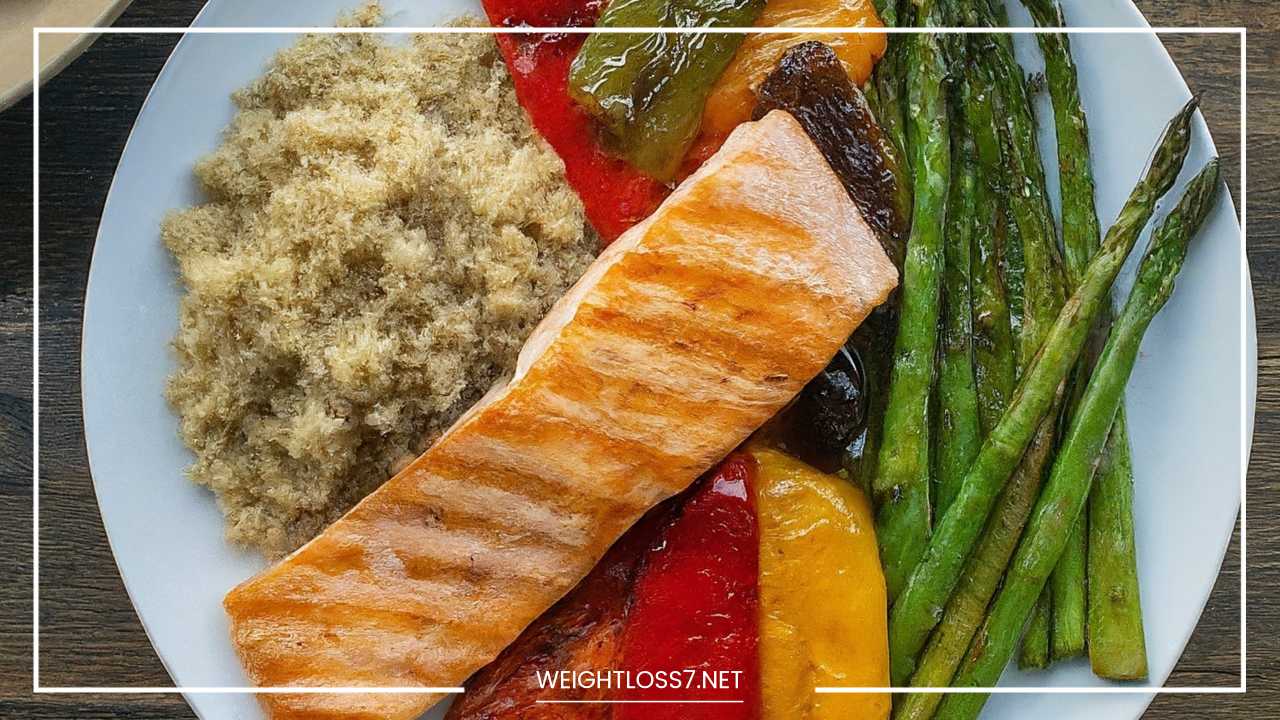What is the South Beach Diet

South Beach Diet
Shedding Pounds and Changing Habits: A Deep Dive into the South Beach Diet
In the ever-evolving world of weight loss plans, the South Beach Diet has carved out a niche for itself. Created by Dr. Arthur Agatston, a cardiologist, it gained immense popularity after the publication of his book of the same name in 2003. But what exactly is the South Beach Diet, and is it the right fit for you?
This comprehensive guide will delve into the core principles, phases, potential benefits and drawbacks, and offer insights to help you decide if it aligns with your goals and lifestyle.
Core Principles: Rethinking Carbs and Fats – A Scientific Exploration
Unlike traditional low-fat diets that demonized all fats, the South Beach Diet takes a more nuanced approach, informed by emerging scientific understanding of macronutrients. Here’s a deeper look at the core principles:
-
Limiting Refined Carbohydrates: Refined carbohydrates, like those found in sugary drinks, white bread, pasta, and pastries, are quickly absorbed by the body, leading to blood sugar spikes and crashes. These crashes can trigger cravings and make it difficult to manage hunger. The South Beach Diet restricts these carbohydrates to promote stable blood sugar levels and reduce cravings for sugary foods.
-
Prioritizing Lean Protein: Protein is essential for building and repairing tissues, and it also plays a role in satiety. By prioritizing lean protein sources like fish, chicken, and legumes, the South Beach Diet helps you feel fuller for longer, potentially reducing calorie intake throughout the day.
-
Embracing Healthy Fats: Not all fats are created equal. The South Beach Diet encourages healthy fats, such as those found in avocados, nuts, and olive oil. These fats provide satiety, promote heart health, and aid in the absorption of certain vitamins. They also contribute to a feeling of fullness, further aiding in weight management efforts.
-
Incorporating Low-Glycemic Carbs: Low-glycemic carbs, such as complex carbohydrates found in vegetables, whole grains, and some fruits, are digested more slowly, leading to a more gradual rise in blood sugar levels. This sustained energy prevents the crashes associated with refined carbohydrates and helps you feel energized throughout the day.
The South Beach Diet’s philosophy is based on the concept of glycemic index (GI). The GI is a ranking system that assigns a value to carbohydrates based on their impact on blood sugar levels. Lower-glycemic carbohydrates cause a slower and more controlled rise in blood sugar, promoting satiety and potentially reducing cravings.
A Phased Approach to Weight Loss: A Journey of Transformation
The South Beach Diet unfolds in three distinct phases, each designed to build upon the previous one and create a sustainable lifestyle change. Here’s a detailed breakdown of each phase:
Phase 1: The Two-Week Jumpstart (Induction)
This initial phase is the most restrictive, lasting for two weeks. It’s designed to jumpstart weight loss and break unhealthy eating habits. Here’s a closer look:
- Restricted Carbs: Most fruits, starchy vegetables like potatoes and corn, and all grains are off-limits. This eliminates the main culprits behind blood sugar spikes and helps regulate insulin levels.
- Focus on Protein and Healthy Fats: Lean protein sources like chicken, fish, and eggs take center stage, along with healthy fats from avocados, nuts, and olive oil. These keep you feeling full and provide essential nutrients.
- Allowed Foods: You’ll enjoy a variety of lean meats, fish, eggs, low-fat dairy products, vegetables (except starchy ones), and healthy fats like nuts and avocados. This allows for a satisfying and nutritious diet while promoting weight loss.
Phase 2: Reintroduction and Long-Term Weight Loss
Phase 2 eases you into a more sustainable eating pattern that you can maintain for the long term. Here’s a breakdown of what to expect:
- Gradual Carb Reintroduction: Certain “good carbs” like whole grains and some fruits are gradually reintroduced. This provides your body with necessary fiber and helps regulate digestion. Examples include brown rice, quinoa, berries, and apples.
- Healthy Fats Remain Key: Healthy fats continue to be a cornerstone of your diet, providing satiety and supporting heart health.
- Learning Healthy Habits: This phase emphasizes developing healthy eating habits that you can incorporate into your lifestyle for long-term weight management. These habits may include mindful eating practices, portion control techniques, and meal planning.
Phase 3: Healthy Living for Life (Maintenance)
Once you’ve reached your weight loss goal, Phase 3 helps you maintain a healthy lifestyle and prevent weight regain. Here’s what it entails:
- Balanced and Flexible Eating: You can enjoy a wider range of foods, including occasional treats, while prioritizing healthy choices. This allows for social eating and prevents feelings of deprivation.
- Portion Control and Mindful Eating: Learning proper portion control and mindful eating habits empower you to make informed choices. This can involve using smaller plates, focusing on satiating foods, and paying attention to hunger and fullness cues.
- Lifestyle Changes for Overall Health: The emphasis shifts to incorporating physical activity and stress management for long-term well-being. Regular exercise helps burn calories and build muscle, while stress management techniques can prevent emotional eating.
Potential Benefits of the South Beach Diet: A Look at the Data
The South Beach Diet offers several potential benefits, backed by research:
-
Weight Loss: Studies have shown that the South Beach Diet can be effective for weight loss in the short term and may be comparable to other popular diets [1, 2]. The initial restriction of refined carbohydrates can lead to rapid weight loss, while the emphasis on protein and healthy fats promotes satiety and reduces calorie intake.
-
Improved Blood Sugar Control: By limiting sugary and processed foods, the South Beach Diet can help regulate blood sugar levels [3]. This can be particularly beneficial for individuals with prediabetes or type 2 diabetes, as it may help reduce the need for medication.
-
Reduced Heart Disease Risk: The focus on healthy fats, lean protein, and low-glycemic carbohydrates aligns with dietary recommendations for heart health [4]. These dietary choices can help lower bad cholesterol levels (LDL) and improve good cholesterol levels (HDL), potentially reducing the risk of heart disease.
-
Reduced Cravings: By stabilizing blood sugar levels, the South Beach Diet can potentially reduce cravings for sugary and unhealthy foods [5]. This can be a significant benefit for those struggling with emotional eating or sugar addiction.
It’s important to note that these are potential benefits, and individual results may vary. Consulting a healthcare professional before starting any new diet is crucial, especially for those with underlying health conditions.
Considerations and Potential Drawbacks: A Balanced Perspective
While the South Beach Diet has its merits, it’s essential to consider some potential drawbacks:
-
Initial Strictness: Phase 1 can be challenging due to its restrictive nature. Sudden changes in eating habits can lead to side effects like headaches, fatigue, and constipation. It’s crucial to consult a healthcare professional before starting, especially for those with pre-existing conditions.
-
Limited Carbs May Cause Side Effects: The initial reduction in carbohydrates can lead to side effects like headaches, fatigue, and constipation [6]. These symptoms typically subside within a few days as your body adjusts to the new dietary pattern.
-
Focus on “Good” and “Bad” Carbs: The South Beach Diet’s labeling system of “good” and “bad” carbohydrates can be overly simplistic. All carbohydrates can be part of a healthy diet in moderation. The key lies in choosing complex carbohydrates over refined ones for sustained energy and blood sugar control.
-
Potential Nutrient Deficiencies: Restricting certain food groups in Phase 1 might lead to deficiencies in some vitamins and minerals. Consulting a registered dietitian can help ensure you’re getting all the nutrients your body needs through a personalized meal plan that incorporates a wider variety of foods as you progress through the phases.
Is the South Beach Diet Right for You? – A Personalized Approach
The South Beach Diet can be a helpful tool for weight loss and improving overall health, but it’s not a one-size-fits-all solution. Consider these factors before diving in:
-
Your Health Status: If you have any underlying health conditions, consult with your doctor before starting the South Beach Diet. They can advise you on whether it’s safe and appropriate for you and can help you modify it if needed.
-
Your Lifestyle: Consider your daily routine and food preferences. Can you realistically stick with the initial restrictions of Phase 1? Will you have access to healthy and varied foods throughout the day?
-
Your Long-Term Goals: The South Beach Diet is designed to be a lifestyle change, not a quick fix. Are you committed to making sustainable changes to your eating habits and overall health?
Here are some additional tips for success with the South Beach Diet:
- Plan your meals and snacks: This will help you avoid unhealthy choices when you’re feeling hungry.
- Drink plenty of water: Staying hydrated is essential for overall health and can also help you feel full.
- Find a support system: Let your friends and family know about your goals and enlist their support.
- Be patient and focus on progress, not perfection: Don’t get discouraged by setbacks. Celebrate your victories, big and small.
Remember, the best diet is the one that you can stick with in the long term. If the South Beach Diet’s structure or restrictions don’t resonate with you, there are other healthy eating approaches to explore.
Here are some alternatives to consider:
-
The Mediterranean Diet: This heart-healthy diet emphasizes fruits, vegetables, whole grains, legumes, and healthy fats from olive oil. It also encourages moderate amounts of fish and poultry, with limited red meat and processed foods.
-
The DASH Diet: Designed to help lower blood pressure, the DASH diet focuses on fruits, vegetables, whole grains, and low-fat dairy products. It also encourages lean protein sources and limits saturated and trans fats, sodium, added sugars, and red meat.
-
The Flexitarian Diet: This approach encourages a mostly plant-based diet with occasional inclusion of meat, poultry, or fish. It allows for flexibility and customization based on individual preferences.
No matter which approach you choose, remember these key principles for healthy eating:
- Focus on whole, unprocessed foods: These foods are naturally more nutritious and filling than processed alternatives.
- Incorporate a variety of fruits, vegetables, and whole grains: These provide essential vitamins, minerals, and fiber for optimal health.
- Choose lean protein sources: Lean protein helps you feel full and supports muscle growth and repair.
- Limit unhealthy fats: Minimize saturated and trans fats, found in processed foods and fatty meats, and opt for healthy fats from sources like olive oil, nuts, and avocados.
- Control portion sizes: Pay attention to serving sizes and use smaller plates to avoid overeating.
- Stay hydrated: Drinking plenty of water is essential for overall health and can also help you feel full.
- Read food labels: Be mindful of added sugars, sodium, and unhealthy fats in packaged foods.
In conclusion, the South Beach Diet can be a valuable tool for weight loss and improved health, but it’s not the only option.
By understanding its core principles, potential benefits and drawbacks, and exploring alternative healthy eating approaches, you can make informed choices to create a sustainable and personalized plan for a healthier you.

















